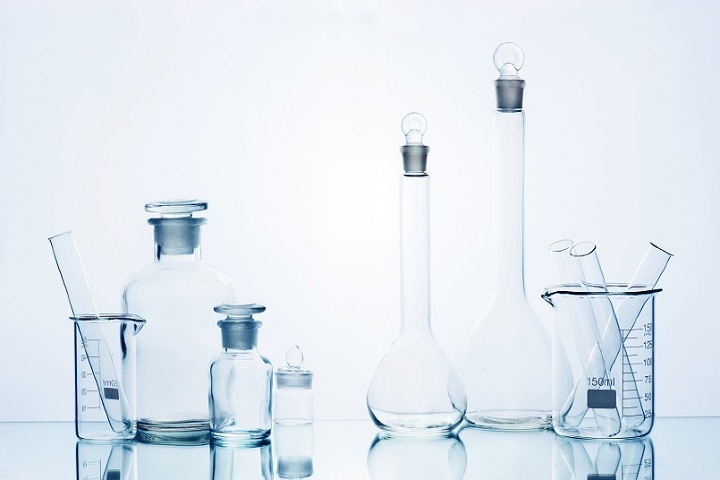
 Data Structure
Data Structure Networking
Networking RDBMS
RDBMS Operating System
Operating System Java
Java MS Excel
MS Excel iOS
iOS HTML
HTML CSS
CSS Android
Android Python
Python C Programming
C Programming C++
C++ C#
C# MongoDB
MongoDB MySQL
MySQL Javascript
Javascript PHP
PHP
- Selected Reading
- UPSC IAS Exams Notes
- Developer's Best Practices
- Questions and Answers
- Effective Resume Writing
- HR Interview Questions
- Computer Glossary
- Who is Who
Sterilization Techniques for Glassware
Introduction
Sterilization is a process of complete removal of all types of living organisms from certain surfaces, objects, or liquids to avoid the chances of contamination and spoilage. It is either done by physical methods like ultraviolet radiations, autoclaving, etc., or by chemical methods like using ethanol. It is different from disinfection in the fact that disinfection kills many types of microorganisms but not all. Sterilization is more effective as compared to disinfection.
Need of Sterilization
There are some microorganisms that are very dangerous and a person who is working in close vicinity with such microorganisms is likely to fall sick when exposed to them. That is why it is important to stop the transmission of these microorganisms from such surfaces by sterilizing them. Also, sterilization prevents any kind of cross-contamination and spoilage of the media to be used.
Glassware Used in The Laboratories
In laboratories, many types of glassware are used the quality of which depends on the purpose of use and their capabilities. The most commonly used type of glass in laboratories is borosilicate glass, it is made up of boron oxide and silica and is the most heat-resistant type of glass and does not expand on heating.
Some of the common glassware used are beakers, flasks, test tubes, jars, microscopic slides, Petri dishes, watch glass, reagent bottles, desiccators, measuring cylinders, volumetric flasks, pipettes, burettes, stirrers, etc.

This glassware is preferred over plastic ware as they are heat resistant whereas plastic ware can melt at high temperatures also strong acids like aqua Regia and other acids and strong Alkalies cannot be kept in plasticware as they can corrode it.
Cleaning of Glassware
Cleaning of glassware involves the following steps ?
In the first step the glassware to be washed is soaked in detergent overnight so that the contaminants may become loose, and any grease left can also be removed.
The particles which cannot be removed by rinsing are scrubbed using brushes or scouring pads.
Trace quantities of the contaminants are generally removed using aqua regia or other mild acids which cannot be removed by normal scrubbing. It is important for some sensitive experiments and this step eliminates the chances of any cross contamination.
After they are washed with detergents and mild acids, they are thoroughly rinsed with water to remove the traces of acids and detergents and are then placed upside down on a rack and allowed to dry.
Sterilization of Glassware
Sterilization is the process of destruction of all microbes including bacterial and fungal spores by physical or chemical methods. The physical methods for sterilization include ?
By dry heat.
By moist heat.
By Dry Heat
Flaming
Glassware like the mouth of the culture tubes, slides and cover slips are passed over Bunsen flame but is not allowed to become red hot. This method kills the bacteria.
Hot air oven
Glassware like Petri dishes, test tubes, conical flasks, measuring cylinders, beakers, etc., are sterilized by this method. Here dry heat is used for the sterilization. The oven is heated with the help of electricity at a temperature of 1600C to 1700C and glassware is sterilized at this temperature for about 2 hours.
The oven is fitted with fans that ensure the even distribution of heat. But the problem with a hot air oven is that air is a very poor conductor of heat hence the penetration is low therefore there are chances of inadequate sterilization.
By Moist Heat
Autoclaving
The dry heat methods are not useful when it comes to the removal of bacterial and fungal spores. To overcome this limitation moist heat or steam is used. The use of steam for sterilization of pieces of equipment and media is done with the help of an autoclave.
Autoclave works on the principle that steam having high latent heat has high penetration. It is an inexpensive and non-toxic method that can effectively kill microbes and spores rapidly.
An autoclave produces heat by pressurized steam which damages the structure protein and enzymes of the microorganisms and causes their denaturation and coagulation. Ideal temperature used in the autoclaving process is 1210C for a period of 30 min.
They are frequently used in laboratories, research facilities, medical centres and hospitals. They can also be used in other businesses as it cheap, easy, and non-toxic. It is used in places where glassware has to be used again and again.
Preservation of The Sterility
All the lab equipment that is being sterilized is maintained by keeping it in a package until it is used. It can be plastic or paper which is used for packaging.
Conclusion
While working in laboratories, researchers and medical professionals are exposed to a number of microorganisms, some of them can be harmful and some can be harmless. Therefore, while working in such an environment it is highly essential to keep the working area and pieces of equipment free of these microbes which is brought about by sterilization.
While working with glassware it is preferable to either autoclave them or keep them in a hot air oven to remove any microbe from its surface. Doing so can protect the working professional as well as give correct results.

